#horemheb
Explore tagged Tumblr posts
Text

Lamenting scene during a funeral
New Kingdom, late 18th Dynasty, ca. 1332-1323 BC. Memphite tomb of Horemheb, Saqqara. Now in the Louvre. E 11274
197 notes
·
View notes
Text
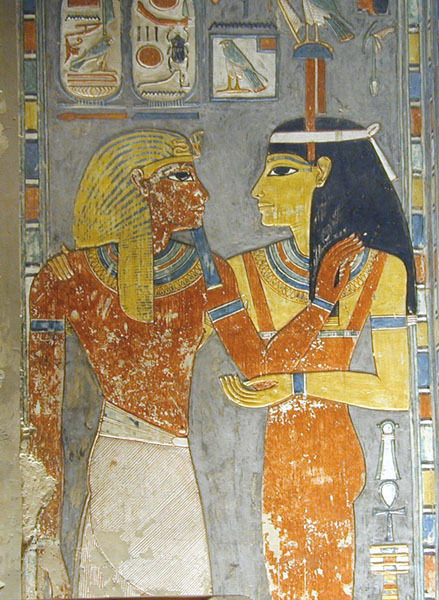
Imentet greeting Pharaoh Horemheb in his tomb in the valley of the Kings, KV 57. Imentet was a goddess representing the necropolises west of the Nile.
116 notes
·
View notes
Text
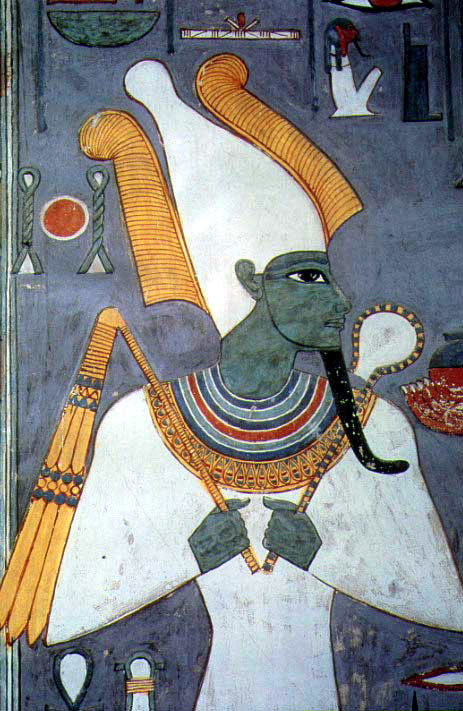
Osiris, from the tomb of King Horemheb
#Egypt#ancient Egypt#Osiris#Egyptian tomb#Egyptian#tomb#netcher#netcheru#deity#ancient history#ancient#underworld#duat#Horemheb#valley of the kings#kemetic#Kemet
105 notes
·
View notes
Photo
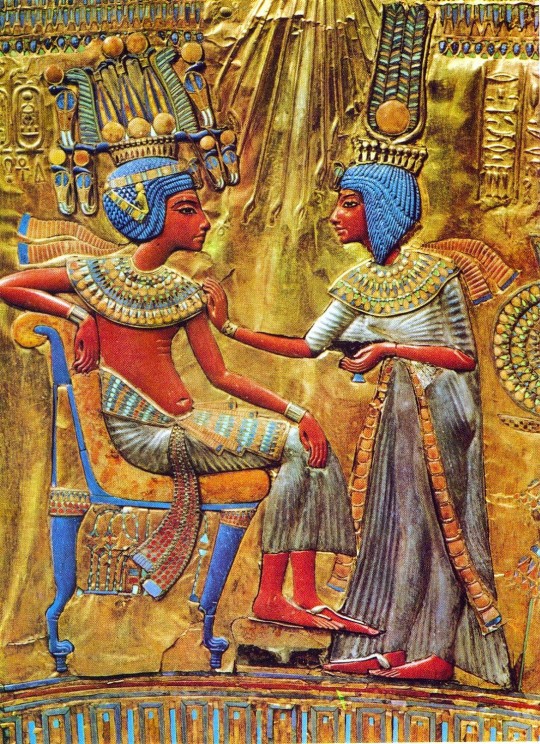
Ânkhésenamon
Ânkhésenamon (née vers 1350 av. J.-C. et connue sous le nom d'Ânkhésenpaaton dans sa jeunesse) était la fille d'Akhenaton et de Néfertiti de la XVIIIe dynastie d'Égypte. Mariée à son père, elle lui aurait peut-être donné une fille, Ânkhésenpaaton Tasherit ("Ânkhésenpaaton la jeune"), avant l'âge de 13 ans.
Lire la suite...
1 note
·
View note
Text
How do I become a egyptologist?????
Watching the mummy 1999 for shits and giggles, thought it'd be fun to bitch abt the inaccurate hieroglyphs now that I know smth abt all that. Disappointed and disgusted to find out that they hired an egyptologist consultant and the hieroglyphs are actually well done. Night ruined
#my childhood dream#of being like howard carter#not a great childhood dream i know#year 3 me got obsessed with tutankhamun#i was like 9?#and i was theorising on who killed him#ay and horemheb are names that give me immense nostalgia
49K notes
·
View notes
Text

3,200-Year-Old Egyptian Tomb of Ramesses III’s Military Commander Uncovered
Egyptian archaeologists have discovered a 3,200-year-old tomb thought to be that of a senior military commander during the time of Pharaoh Ramesses III. The tomb was discovered at the Tell el-Maschuta site, also referred to as Tell el-Maskhuta, in the Ismailia governorate. The discovery illuminates the strategic significance of the area in protecting Egypt’s eastern borders during the New Kingdom period.
Dr. Mohamed Ismail Khaled, Supreme Council of Antiquities Secretary General, underlined the significance of the discovery, noting that the Tell el-Maschuta area was a key military outpost. Existing fortifications and garrisons in the region suggest that it played a crucial role in defending Egypt against external threats.
The tomb, constructed using mud bricks, features a main burial chamber and three other surrounding rooms whose walls are covered with white mortar. Inside, archaeologists discovered a collection of artifacts that indicate the deceased was a high-ranking military official. The most significant items discovered were a gold ring with the cartouche of Ramesses III, bronze arrowheads, and a small ivory box. The artifacts suggest the individual was the pharaoh’s military leader.



One of the most fascinating finds was a set of inscribed pottery vessels with the name of Pharaoh Horemheb, who reigned from around 1323 to 1295 BCE. A former military leader before becoming a pharaoh, Horemheb ruled over a hundred years prior to Ramesses III. The fact that his name appears on the pottery indicates that the tomb could have been reused over time.
Further evidence of the reuse of the tomb came to light through the human remains recovered inside. A skeleton covered in cartonnage—material made up of linen and plaster—refers to the fact that the burial had been altered in later periods. In addition to skeletal remains, archaeologists also recovered alabaster vessels, semi-precious stones, and amulets depicting the gods Taweret and Bes, as well as the Eye of Udjat, a protective symbol in Egyptian mythology.
Beyond the military commander’s tomb, archaeologists also uncovered a series of collective and individual burials dating to the Greco-Roman and Late Periods. These burials contained skeletal remains and funerary artifacts that highlight the region’s rich cultural history as a crossroads between civilizations. Professor Qutb Fawzi Qutb, director of the Lower Egypt and Sinai Antiquities Department, noted that the combination of Egyptian and Greco-Roman elements in the tombs provides valuable insights into the region’s diverse historical influences.



In addition to the tomb of the military commander, archaeologists also unearthed a series of collective and individual burials that dated to both the Greco-Roman and the Late Period. The burials contained skeletal remains and artifacts revealing the region’s rich cultural history as a crossroads between civilizations.
Ramesses III, who ruled from about 1184 to 1153 BCE during Egypt’s 20th Dynasty, is often regarded as the last great pharaoh of ancient Egypt. His reign was marked by military conflicts, most notably his conflicts with the Sea Peoples, a group of seafaring raiders that threatened the stability of Mediterranean civilizations. In the most pivotal battle, the Battle of the Delta in 1175 BCE, the Egyptian navy outmaneuvered the invaders with tactical superiority on the waterways of the Nile.
The recently discovered tomb brings intriguing speculations about the occupant’s role in these wars of antiquity. If this individual buried within was a military commander under Ramesses III, he may have played a crucial role in defending Egypt.
The Egyptian Tourism and Antiquities Ministry stated it would go ahead with more excavations and studies on the site in the hopes that further studies will reveal additional information on Egypt’s military and cultural history.
By Dario Radley.

#3200-Year-Old Egyptian Tomb of Ramesses III’s Military Commander Uncovered#Tell el-Maschuta#Tell el-Maskhuta#Pharaoh Ramesses III#ancient graves#ancient tombs#funeral goods#grave goods#ancient artifacts#archeology#history#history news#ancient history#ancient culture#ancient civilizations#ancient egypt#egyptian history
25 notes
·
View notes
Photo

A Gallery of Tutankhamun & Family
Tutankhamun is easily the most famous Egyptian ruler in the world thanks to his nearly intact tomb discovered by Howard Carter in 1922 and the "mummy's curse" associated with the opening of that tomb. Although Tutankhamun was initially thought to have been a minor ruler, that opinion has changed, and he is now regarded in a more favorable light.
Tutankhamun (r. c. 1336 to c. 1327 BCE) was the son of Amenhotep IV (better known as Akhenaten) of the 18th Dynasty and his wife Nefertiti. He came to the throne at a young age and died soon after. His father had changed the religious paradigm of polytheism to a monotheistic worship of the god Aten, and the young prince was originally known as Tutankhaten ("living image of Aten") before he changed his name to Tutankhamun ("living image of Amun") when he discarded his father's new religion and returned Egypt to a worship of the old gods, including the popular Amun.
When the general Horemheb (r. 1320-1292 BCE) came to the throne, he tried to erase all evidence of Akhenaten and his family including, of course, Tutankhamun, claiming for himself the role of champion of the old gods and restorer of tradition. Tutankhamun's tomb was accidentally buried later by the workers building the tomb of Ramesses VI (r. 1145-1137 BCE) and was forgotten until its discovery by Carter.
The famous "mummy's curse" or "Curse of Tutankhamun" that became worldwide headlines in 1923 after the "mysterious" death of Carter's patron, Lord Carnarvon, was based on a misinterpretation of an inscription found in the tomb which was reported as reading "I will kill all of those who cross this threshold into the sacred precincts of the royal king who lives forever" but which actually read "I am the one who prevents the sand from blocking the secret chamber" – the "I" being the door. Howard Carter was aware the "curse" was fiction but never challenged it because it kept people away from the tomb, and he could work in peace without constant interruptions. The "curse" also scared people who had either smuggled artifacts out of Egypt illegally or purchased them on the black market into returning them or donating them to museums. There was nothing mysterious about the death of Carnarvon or anyone else associated with opening the tomb. Carter lived until 1939, and Carnarvon's daughter, who was present when the tomb was opened, lived until 1980.
This gallery presents some of the artifacts found in Tutankhamun's tomb as well as images of his parents, the famous image of the young king and his wife Ankhsenamun, and, of course, one of the best-known images associated with ancient Egypt: the golden death mask of Tutankhamun.
Continue reading...
55 notes
·
View notes
Text

Pharaoh Horemheb, Pregnant Pharaoh/Mummy.
If you like my work, Buy Me a Coffee.
#mpreg#mpreg belly#mpregnancy#male pregnancy#pregnant man#ai mpreg#man pregnant#male pregnant#mpreg kink#royalty au#pharaoh#mummy
39 notes
·
View notes
Text


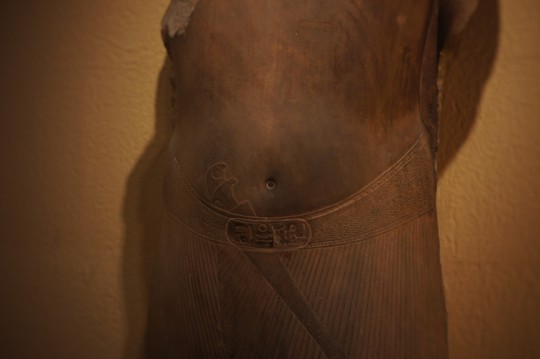


2025/4/12
Colossal statue of Tutankhamun, usurped by Ay and Horemheb
8 notes
·
View notes
Text

“The locals call her Bibân el Molûk, but she’s better known as the Valley of the Kings.”
Or: Aziraphale and Crowley run into each other in Luxor in 1908 and find themselves confronted with the consequences of actions three thousand years old.
Words: 66,572
Status: Complete
Rating: Mature
By @improbabledreams900
Art Credit: The Way of Silence by František Kupka
#fanfic#fanfic cover#fanfiction#fanfiction reccomendations#good omens#good omens fanfiction#good omens fanfiction recs#good omens fandom#ineffable husbands#aziraphale and crowley through the ages#aziracrow#azicrow#ineffable partners#egyptology#mature audiences only
32 notes
·
View notes
Text
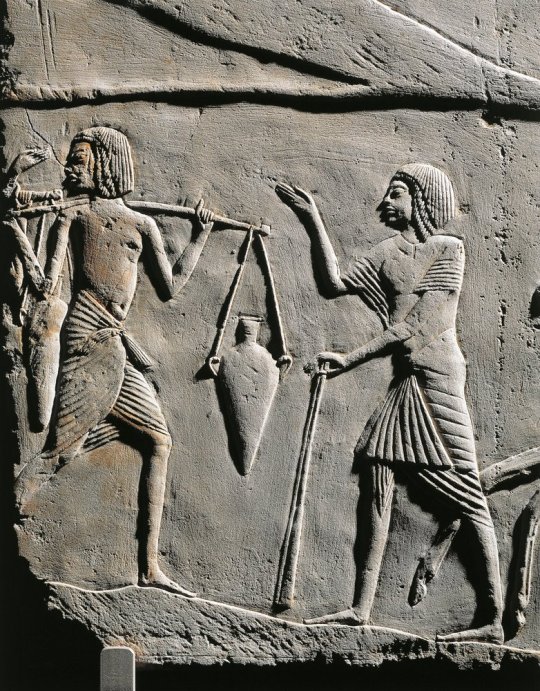
Horemheb’s military encampment: an officer escorts a water bearer
New Kingdom, late 18th Dynasty, ca. 1332-1323 BC. From the Memphite tomb of Horemheb at Saqqara. Now in the Archaeological Civic Museum of Bologna. EG 1889
Read more
79 notes
·
View notes
Note
Ramses I
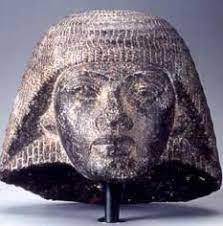
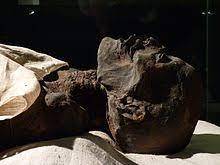
Ramses the I is usually somewhat overlooked, partially due to being overshadowed by his eventual successors and namesakes, Ramses II and Ramses III, the former of which is considered to be 'Ramses the Great', and both of which achieved great things in the realm of battle and buildings. Also unfortunate for Ramses I is the length of his reign, which while disputed, is considered to have been relatively short.
Menpehtyre Ramses, born of Seti, started and was the first Pharaoh of the 19th dynasty of Egypt, and the dates of his reign are generally considered to be around 1292–1290 BC or 1295–1294 BC. However, he was born as a common man, and his father, Seti, was a military commander. Originally, Ramses I's name was Pa-ra-messu, and he eventually grew to succeed his father's rank in the military. Due to this, he became a close confidant with the Pharaoh of the time, the Pharaoh Horemheb.
You may know Horemheb as being one of the main successors of the throne after Tutankhamun's death which, to my knowledge, is wrapped in a little bit of a mystery, but was likely due to genetic malformations from his many diseases. Ay and Horemheb, the Grand Vizier and the General of Armies (respectively), held the main power of the country while Tutankhamun was Pharaoh. This was a time of turmoil––the country was just recovering from the reign of the heretic Akhenaten, who had banned religious worship of any God but the Aten, and essentially attempted to enforce monotheism upon a culture that had been polytheistic for thousands of years previously. Akhenaten had also severely neglected Egypt's relationship with foreign powers. Obviously, people weren't very happy with Akhenaten, and I think it likely they were not fond of Akhenaten's son, Tutankhamun, either. But Tutankhamun, with the help of his advisors and of Ay and Horemheb, reversed many of his heretic father's commands and laws. But Tutankhamun still sailed to the west at the age of 19. He had two baby girls, but neither of them survived past infancy. He had no successors, so Ay took the throne, and then Horemheb.
Horemheb enacted many more reformations to remove Akhenaten's efforts to change Egypt. He tore down the statues of Akhenaten and his monuments, reusing the stone in monuments and temples of his own. He also reused the monuments built for Ay and Tutankhamun, though this was a common practice in Egypt. But Horemheb had no surviving sons, so when it came time for Horemheb to pass on and appoint a new Pharaoh, his Grand Vizier took his place; Paramessu, who would take the name Ramesses I, meaning "Ra has fashioned Him". Ramses I was nearly 50 years old when he ascended to the throne. It was a remarkable age to become Pharaoh, as at this time, he would've already been considered elderly.
What little he did during his life was later completed by his son and successor, Seti I. He himself accomplished mainly one thing, which was to send additions to the garrison at Aswan, the border between Egypt and Nubia; though he also led a military expedition into west Asia and reopened turquoise mines in the Sinai. But the most remarkable things are the ones he didn't complete himself, such as additions to the Karnak temple complex in east Thebes, known as Waset at the time. He ordered to be carved great reliefs into the second pylon of the Karnak temple, which is a massive gateway that one sees relatively soon upon entering the complex. In Abydos, he began construction of a chapel and a temple, but it would have to be completed by his son, as Menpehtyre Ramses died in either the year of 1290 or 1294. His reign was so short that he had very little time to schedule or complete any great monuments, and even his tomb was rushed to be completed, and he was hastily buried in the Valley of the Kings. This rush unfortunately led to a great deal of errors being made in the paintings upon his sarcophagus. Later, however, Ramses I's son, Seti I, finished the chapel in honor of his father, with beautiful carvings and reliefs at Abydos.
His tomb was robbed thoroughly. By the time archaeologists got to it, all that remained were two six-foot tall (1.8 meters) wooden guardian statues who once had gold-foil skin, statuettes of Gods from the underworld, and the massive granite coffin which no longer carried its' owner. Menpehtyre Ramses had been taken to the Royal Cache, located above Hatshepsut's mortuary temple to the southeast. It was the tomb of the pharaoh Amenhotep II, but repurposed to be a protective place for the mummies of many Pharaohs and Queens, as most of the tombs of the Valley of the Kings had become victims of graverobbers. These protective actions were taken by the High Priest of Amun, Pinedjem II, in the 21st Dynasty.
Unfortunately this did not stop the usurping of Ramses I's body. He was stolen by the Abu-Rassul family of grave-robbers and sold by a Turkish vice-consular agent named Mustapha Aga Ayat in Luxor to a man named Dr. James Douglas. Douglas brought Ramses I to the US around the year of 1860, where he was placed in a museum in Niagara Falls with little information known about him. All that was speculated was that he was 'a Prince of Egypt'. Ownership of the museum, and thus of Ramses I, was passed through several hands, but his importance was only recognized with the help of the Canadian Egyptologist Gayle Gibson. Fortunately, in the year 2003, October 24, Menpehtyre Ramses was returned to his homeland of Egypt, and is now resting in the Mummification Museum in Luxor, Upper Egypt.
#Ramses I#ancient egypt#ancient history#egyptology#sometimes people just send me random phrases like this. i dont know what to do with them#so i just write little essays#is this what you wanted?
38 notes
·
View notes
Text
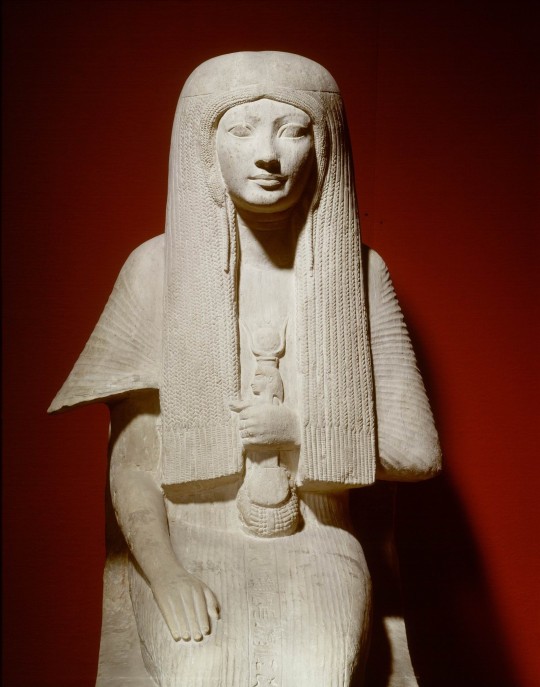
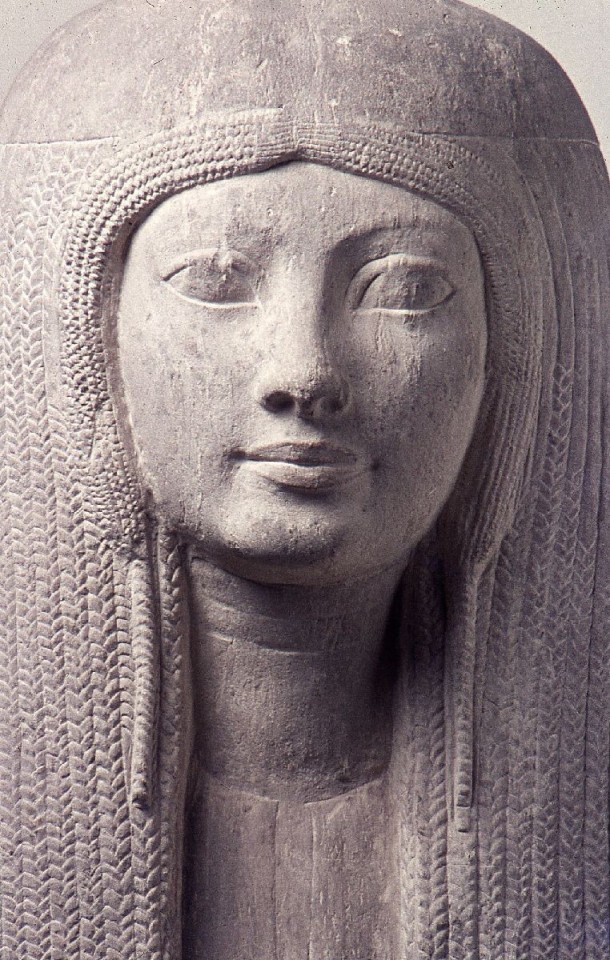

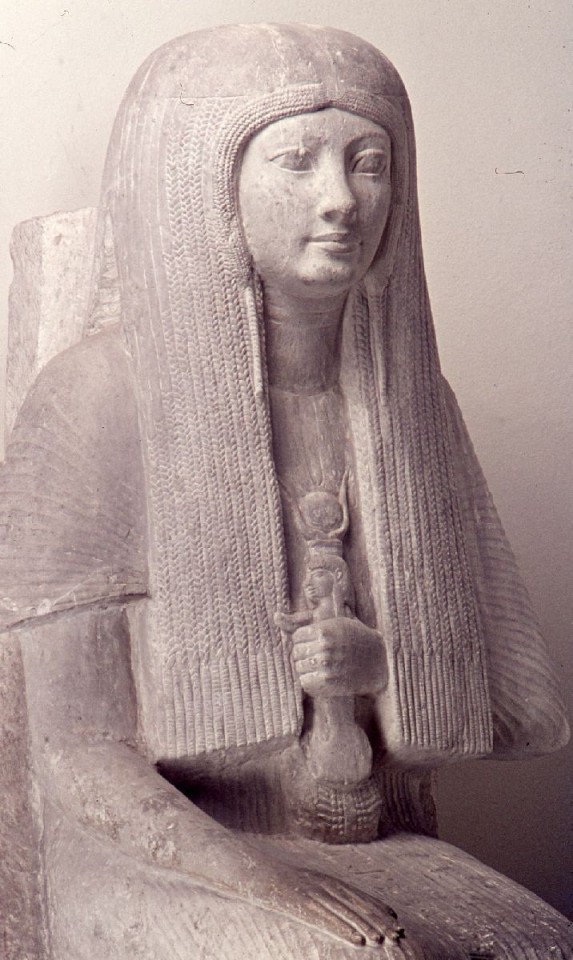

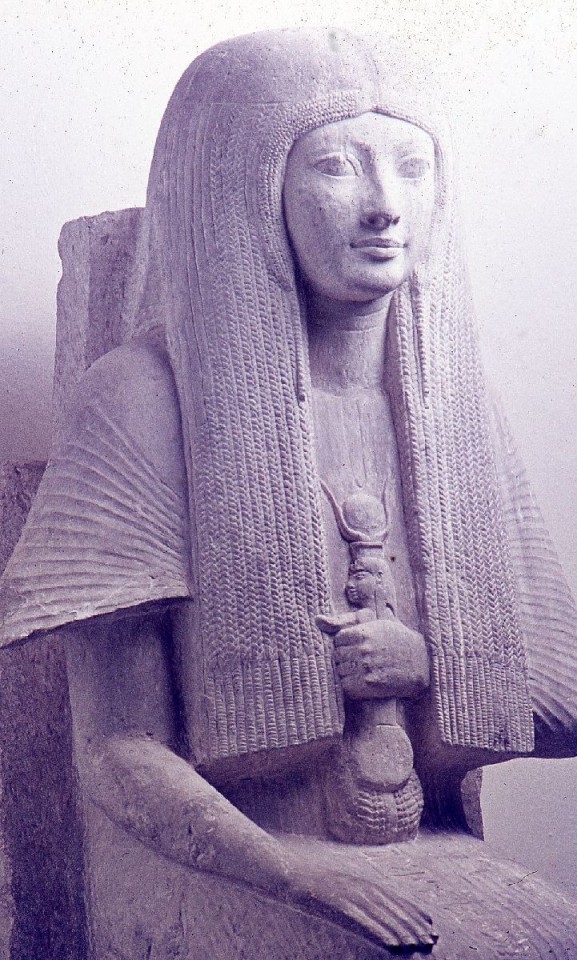

Sitting Image of Merit - Rijkmuseum Von Oudheden Collection
Inventory Number: AST 2 New Kingdom ; 18th Dynasty; Horemheb 1319-1307 BC. Location Information: Egypt, Saqqara, tomb of Maya
Description:
Merit is Maya's wife. Like many notable ladies, she bears the title 'singer of Amon'. In her hands she holds a menat: a necklace of many strings of beads with a figure of the goddess Hathor as a counterbalance in the neck. This is used as a rattle to accompany temple chants.
#rijksmuseum von oudheden#Sitting Image of Merit#AST 2#new kingdom#new kingdom pr#dynasty 18#saqqara#lower egypt#tomb of maya#womens hair and wigs#NKPRWHW
39 notes
·
View notes
Photo
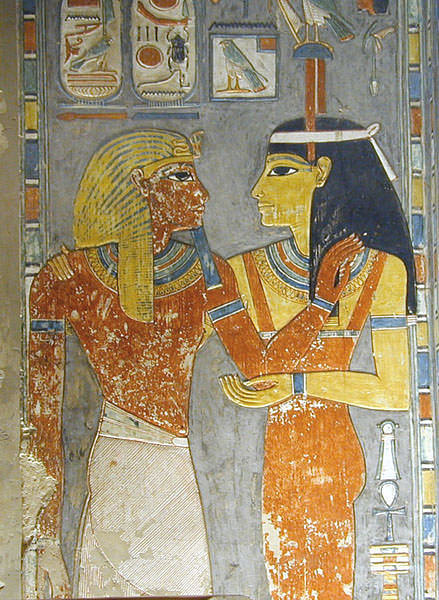
Horemheb
Horemheb (1320-1292 av. J.-C.) fut le dernier pharaon de la 18e dynastie d'Égypte. Il est également connu sous le nom de Horemhab. Son nom signifie "Horus est en fête". Issu des classes inférieures de l'Égypte, il gravit les échelons de l'armée, devint commandant en chef de l'armée égyptienne et, enfin, pharaon.
Lire la suite...
1 note
·
View note
Text
Just for reference, a list of Egyptian themed asteroids.
Mythology:
3554 Amun
1912 Anubis
99942 Apophis
2062 Aten
161 Athor
101955 Bennu
2340 Hathor
1924 Horus
42 Isis
1122 Neith
287 Nephthys
306367 Nut
1923 Osiris
5011 Ptah
2100 Ra-Shalom
5381 Sekhmet
136818 Selqet
86551 Seth
896 Sphinx
4257 Ubasti
3554,1912,99942,2062,161,101955,2340,1924,42,1122
287,306367,1923,5011,2100,5381,136818,86551,896,4257
Others:
19913 Aigyptios
326290 Akhenaten
4161 Amasis
5010 Amenemhet
4847 Amenhotep
51895 Biblialexa (Library of Alexandria)
4412 Chephren
4415 Echnaton
5249 Giza
2436 Hatshepsut
2435 Horemheb
1813 Imhotep
3362 Khufu
216 Kleopatra
4568 Menkaure
4355 Memphis
4413 Mycerinos
3199 Nefertiti
1068 Nofretete
4416 Ramses
4906 Seneferu
4414 Sesostris
5009 Sethos
4512 Sinuhe
4848 Tutenchamun
4846 Tuthmosis
4907 Zoser
19913,326290,4161,5010,4847,51895,4412,4415,5249,2436
2435,1813,3362,216,4568,4355,4413,3199,1068,4416
4906,4414,5009,4512,4848,4846,4907
Probably forgot some... do tell if you can think of any.
60 notes
·
View notes
Text
Happy 3rd Birthday to Horemheb the Gour Headed Four Winged Leopard Frankenplushie!

Like what I do? Please consider supporting me with a donation on Ko-Fi.com/catschimericalcreations
#catschimericalcreations#frankenplush#frankenstuffies#altered plush#upcycled plush#plush modification#frankentoys#plush taxidermy#modded toy#oddbody plush#hybrid plush#chimera plush#conjoined plush#mutant plush#four headed leopard#four headed cat#four headed plush#toy story sid#sewing life alchemist#ty beanie babies#frankenbeanies
5 notes
·
View notes